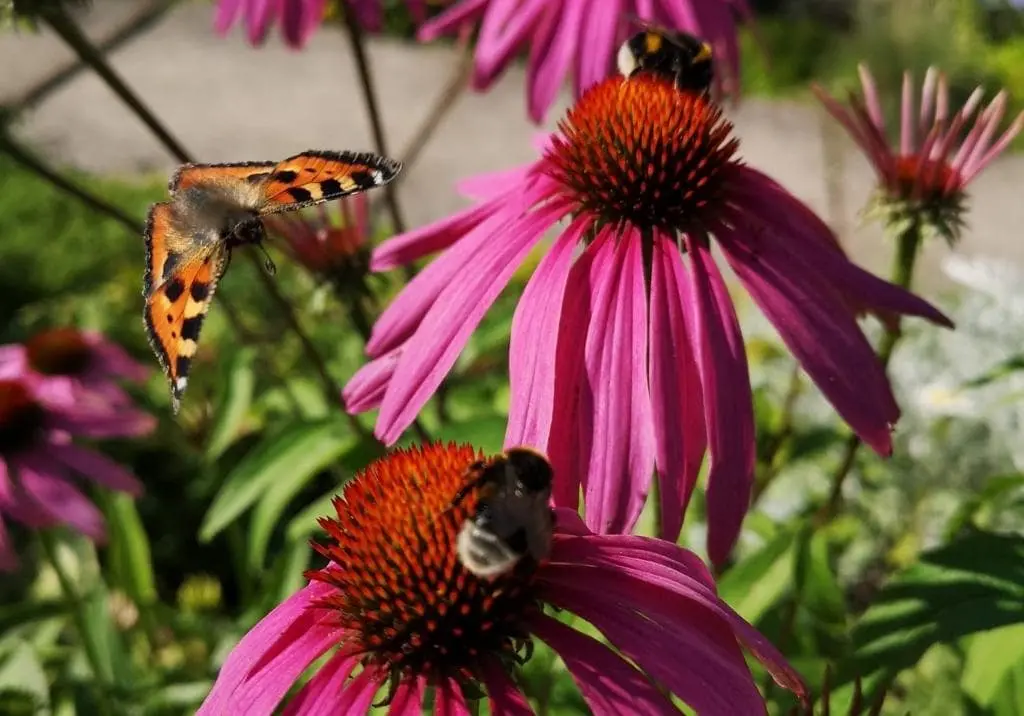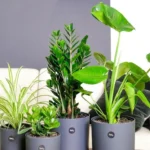Bees and butterflies are essential for pollination, which makes them a key part of maintaining a thriving garden. But beyond their importance, these little visitors bring a magical, colorful touch to your outdoor space. If you’re eager to attract more bees and butterflies to your garden, here are 10 creative and easy-to-implement ways to make your garden a buzzing, fluttering paradise.
1. Plant a Pollinator-Friendly Buffet
The best way to attract bees and butterflies is by offering them a diverse selection of plants that provide nectar and pollen. Opt for native flowers such as:
- Bee Balm – A favorite for honeybees with its aromatic blooms.
- Milkweed – Essential for monarchs and other butterflies.
- Lavender – A classic bee magnet, known for its calming scent.
- Coneflowers – Loved by bees, butterflies, and even birds!
- Zinnias – Bright and showy flowers that attract a variety of pollinators.
Planting a variety of colors and types ensures a constant food supply throughout the blooming seasons, creating a buffet that entices bees and butterflies to stick around!
2. Create a Butterfly Hotel
Butterflies need more than just food – they also need a safe place to rest and lay eggs. You can easily create a “butterfly hotel” by:
- Adding a few hollow stems or bamboo sticks in a sheltered corner.
- Creating a small pile of sticks or leaves near flowers for shelter.
- Including natural materials like pine cones, bark, or dried grasses in a secluded area of your garden.
This provides butterflies with the perfect resting spots, especially when they need to escape strong winds or weather.
3. Add Water Sources for Drinking and Dipping
Bees and butterflies need water, but they don’t drink from deep puddles or fountains. To make your garden extra inviting:
- Set up a shallow birdbath with small stones or pebbles for bees to land on and sip from.
- Place a few dishes filled with water and pebbles, so pollinators can take a drink without drowning.
- Create a damp patch of soil or mud puddles for butterflies. They “puddle” to get essential minerals and salts.
4. Provide a Patch of Wild, Untamed Beauty
Pollinators love wild, natural spaces where plants grow freely. A small, wildflower patch can be the perfect place to invite them in:
- Allow certain parts of your garden to grow a bit wild and untamed.
- Let clover or dandelions grow naturally as they provide both nectar and pollen.
- Leave seed heads on plants like sunflowers or coneflowers to offer food long after blooms have faded.
By creating a wild space, you’ll be replicating the natural habitats bees and butterflies love!
5. Choose the Right Colors
Bees and butterflies are drawn to specific colors. Bright, vibrant flowers in shades of purple, blue, pink, yellow, and white are particularly attractive to pollinators. Try planting:
- Purple Asters – A rich source of nectar.
- Purple Salvia – Perfect for attracting bees.
- Bright Sunflowers – Bees love their pollen, while butterflies bask on their broad petals.
Bees have keen eyesight for colors, particularly blue and ultraviolet, so planting flowers that feature these hues will grab their attention. Butterflies, on the other hand, love bright oranges, pinks, and purples!
6. Embrace Companion Planting
When you plant certain plants near each other, they can work together to attract pollinators. Try these creative pairings:
- Basil & Tomatoes – Basil attracts bees, which will help with pollinating your tomatoes.
- Marigolds & Zinnias – Marigolds deter pests, while zinnias draw in bees and butterflies.
- Lavender & Sage – Both plants thrive together and create a fragrant haven for pollinators.
Companion planting can enhance your garden’s ability to attract bees and butterflies while also improving its overall health!
7. Create a Butterfly Garden Maze
Add some whimsy and fun to your garden by designing a simple maze or path of flowering plants. This interactive garden space not only attracts butterflies but gives you a unique way to enjoy your pollinators’ movements. Consider these tips for a butterfly-friendly maze:
- Use low-growing flowers at the entrance for easy access.
- Create curved pathways of nectar-rich plants to guide butterflies through.
- Include a variety of flowers that bloom at different times, so there’s always something for them to visit.
8. Avoid Pesticides and Chemicals
The most important way to keep bees and butterflies coming back is by avoiding harmful chemicals in your garden. Pesticides, herbicides, and fungicides can be deadly to pollinators. Instead:
- Opt for natural remedies like neem oil or diatomaceous earth for pest control.
- Encourage a balanced ecosystem with beneficial insects like ladybugs, which will naturally help control pests.
- If you must use a chemical treatment, apply it in the evening when bees and butterflies are less active.
9. Incorporate a Butterfly Feeder
Sometimes, butterflies need a little extra sugar boost! Consider adding a butterfly feeder filled with a homemade nectar solution (a mix of 4 parts water to 1 part sugar). Hang it near plants, and you’ll likely attract butterflies that are in search of a sweet snack.
10. Host a Pollinator Party
Sometimes, the best way to attract bees and butterflies is by simply celebrating them! Host a pollinator-friendly garden party by:
- Sharing your knowledge of bees and butterflies with friends.
- Creating educational garden tours showcasing your pollinator-friendly plants.
- Offering bee-friendly snacks and drinks for human guests, like honey lemonade or flower-shaped cookies.
This can help spread the word about the importance of pollinators, while making your garden a vibrant, community-oriented space!
Final Thoughts
By creating an environment full of beauty, food, water, and shelter, you’ll be doing your part to protect and encourage bees and butterflies in your garden. Every colorful bloom and buzzing visit adds a little more life to your outdoor space. Whether you’re planting a new garden or adding a few bee-friendly touches, you’ll find joy in seeing these vital creatures thrive right outside your door.
Happy gardening, and here’s to a garden full of buzzing bees and fluttering butterflies!
What are your favorite plants for attracting bees and butterflies? Share your tips with us in the comments below!



